Alfa Romeo, a wondrously historical Italian brand, possesses one of the most charismatic badges of any car company. Yet, it is a brand that is redefining itself after several years spent in the automotive doldrums, while the company sorted out its product offering. If the Stelvio can be anywhere near as good as the rather special Giulia model released in 2017, it will forge a solid platform for the rest of the Alfa range.
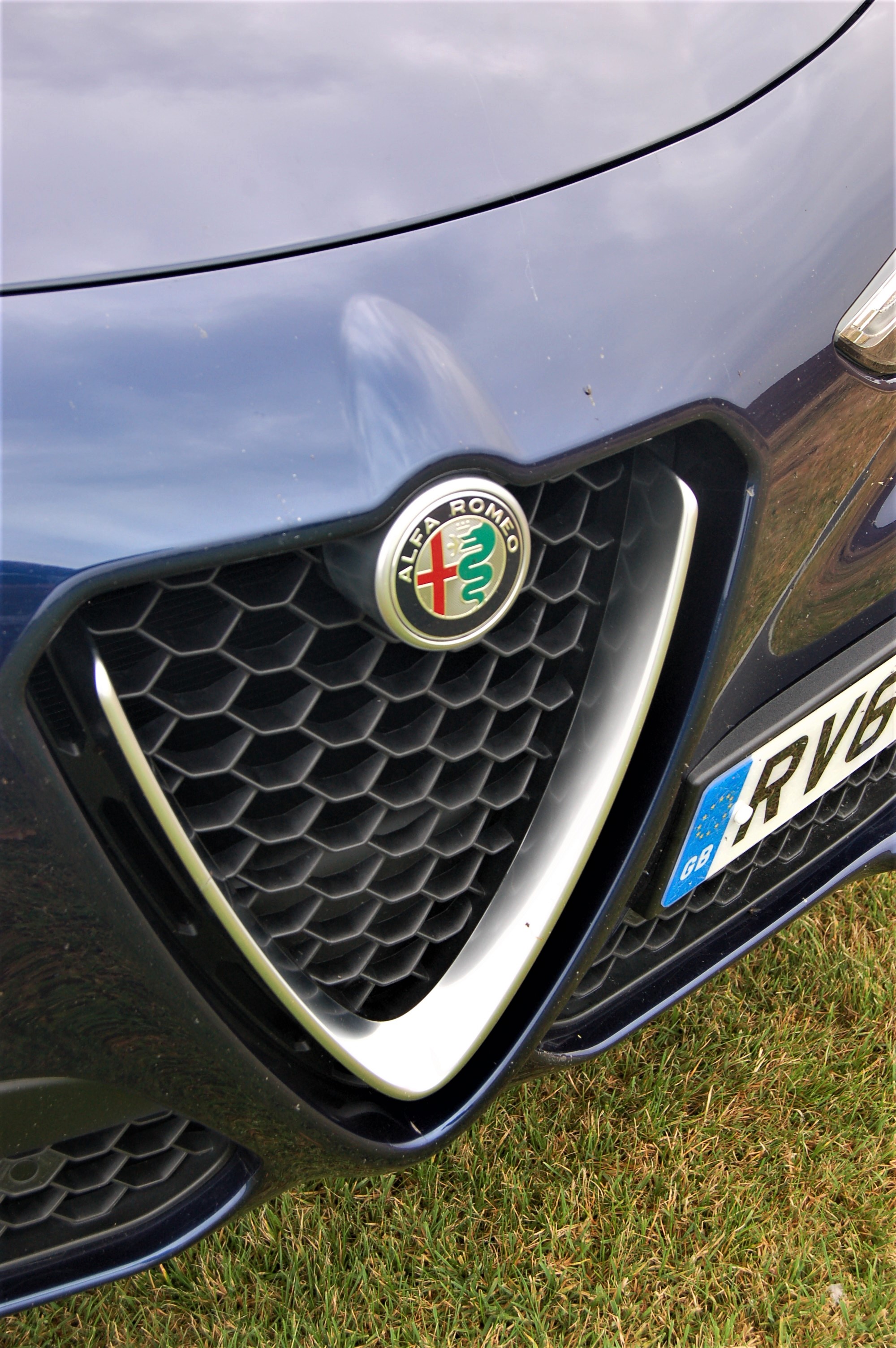
Hiking the Giulia body onto a 4x4 platform, with the potential of sharing technology costs from within the FCA (Fiat-Chrysler-Automotive) Group, a factor which could have been a master-stroke, was never actually on the cards. As a company renowned for technological innovation, Alfa elected to engineer its own hardware. The company even produced an all-new, aluminium-alloy turbo-diesel engine and, yes, there are petrol variants, including the 506bhp bi-turbo V6 supercar-eater, but Alfa expects upwards of 70% of the Stelvio’s turnover to be motivated by diesel power.
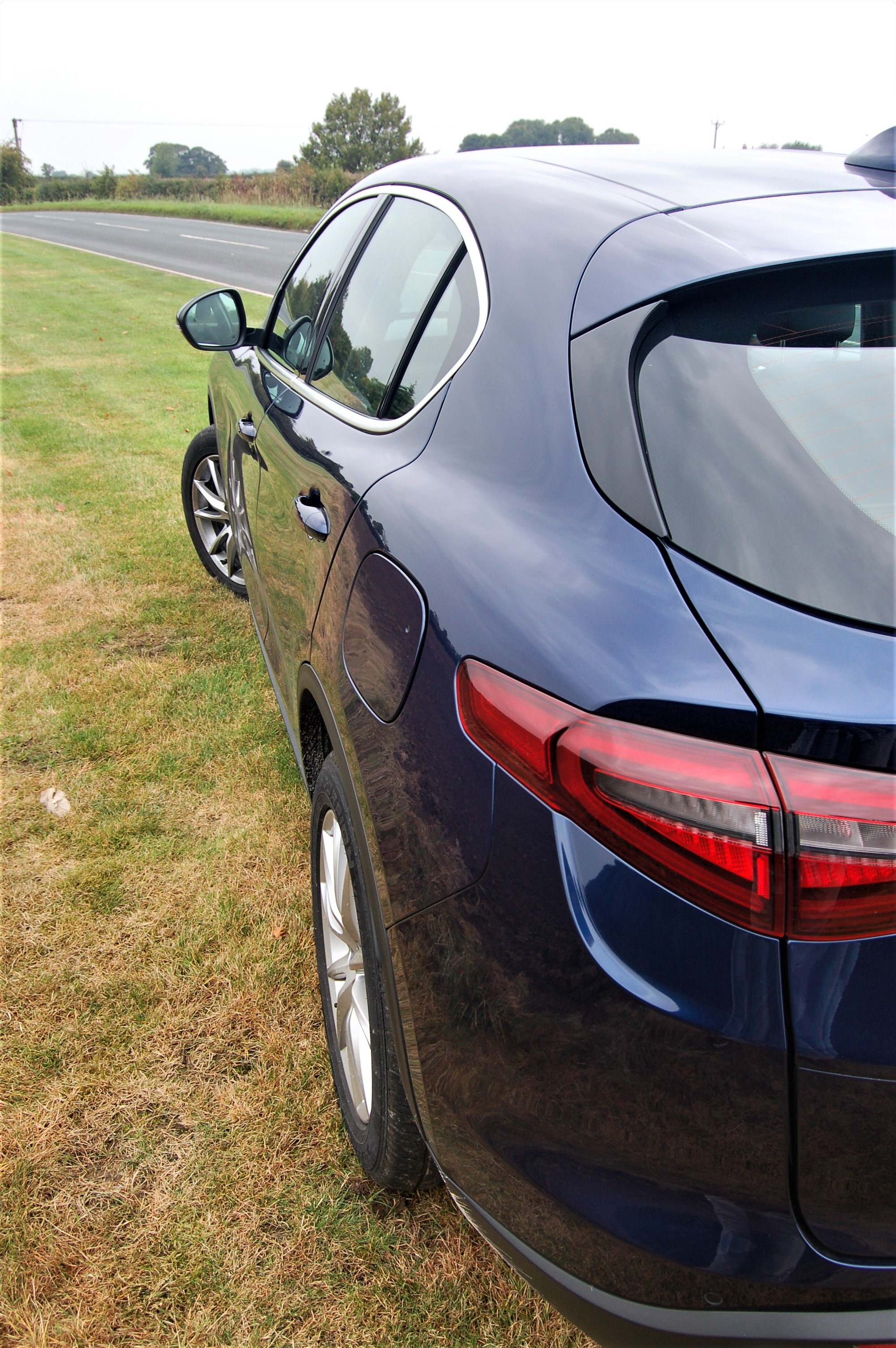
Its four-wheel-drive system is also unique, in that power is directed 100% to the rear wheels, via a carbon-fibre propshaft, and only chassis vectoring technology that detects slippage will result in the front axle receiving up to 50% of the potential. In breaking away from 4x4 conventions, Alfa is ring-fencing its long-standing dynamic values and ensuring that its engineering prowess (it needs to be remembered that Alfa Romeo designed and developed common-rail diesel technology for the rest of the world) remains sacrosanct.
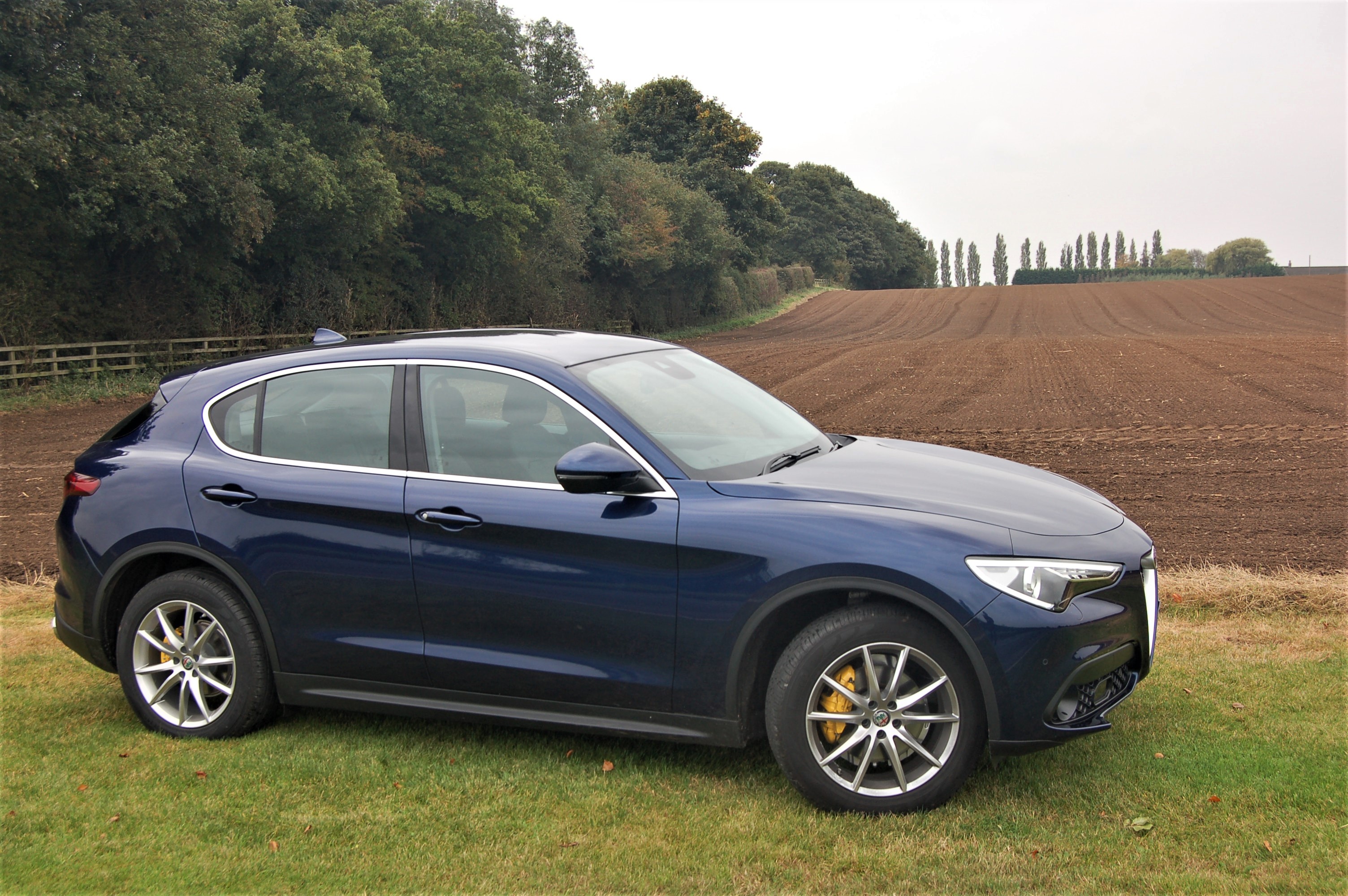
Displacing 2,143cc, the four-cylinder unit of the test car develops a healthy 210bhp at 3,750rpm and a substantial 347lbs ft of torque from 1,750rpm, which underscores its hillclimbing and towing capabilities, driving through an 8-speed fully automatic transmission (complete with £275’s worth of large aluminium paddle shifters, should you desire manual over-ride). It is enough to enable it to blitz the 0-60mph dash in a mere 6.3s, before topping out at a reported 134mph, both being highly respectable figures for a turbo-diesel SUV. Mind you, promising 58.9mpg on the Official Combined fuel cycle, while emitting a lowly 127g/km CO2 (thus a 25% BIK taxation rate for business users), suggests that Stelvio customers have an uncommonly competitive rival to other SUVs in the class.
Although the range starts south of £33k, this model is listed at £38,490, on par with several of its other competitors in the class, before any Motor Source Group discounts are applied. Factoring in a raft of options, which is now familiar practice at this end of the sector, that include leather upholstery (+£850), yellow Brembo brake callipers (+£300), metallic paint (+£770), upgraded 19.0-inch alloys (+£850), compact spare (+£275), cold weather pack (+£550), driver assist pack (+£700), power front seats (+£750), convenience package (+£525) and electrically folding door mirrors (+£275), results in a further upwards hike to £45,610 as tested.
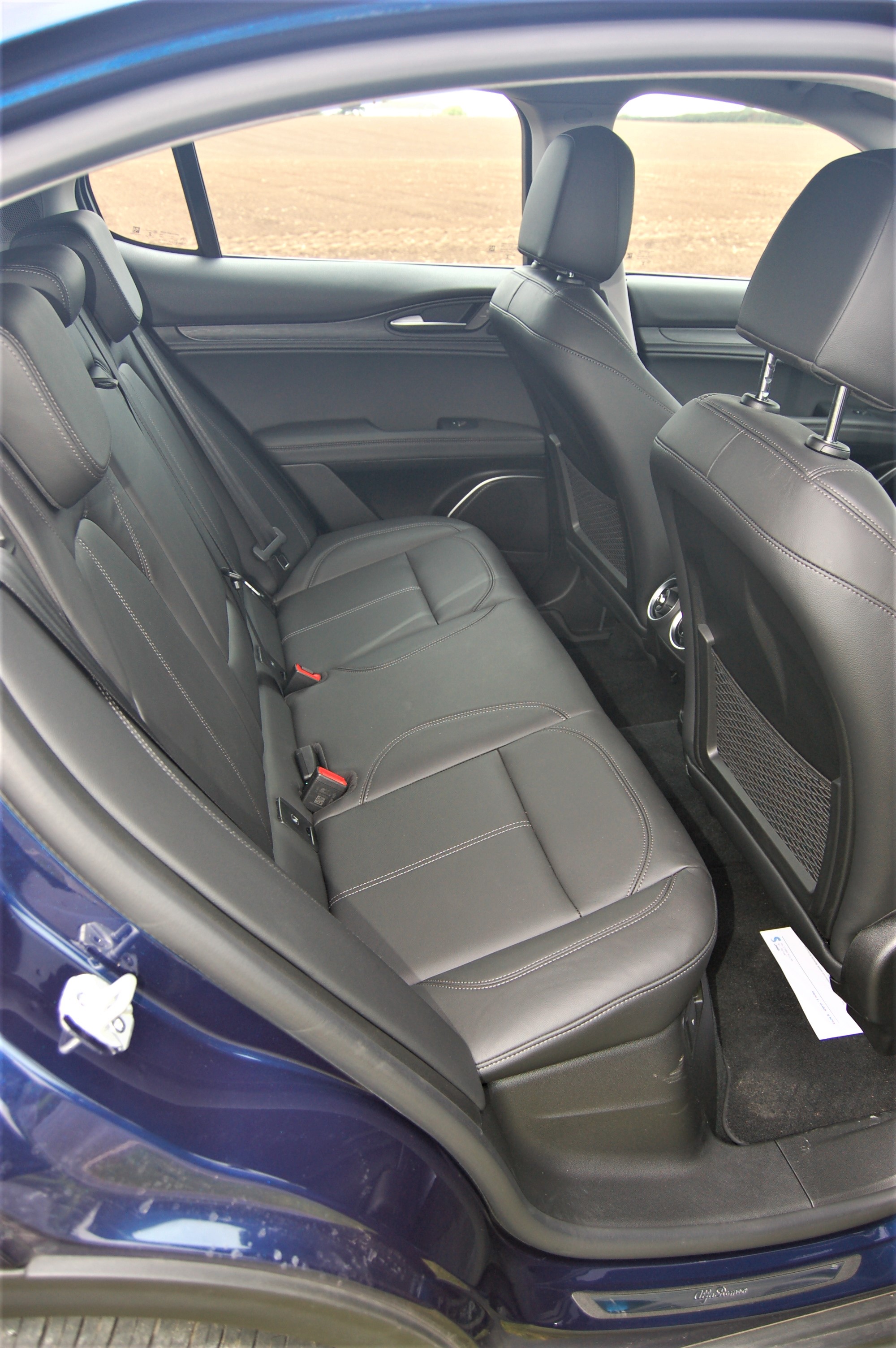
To be fair, the standard equipment is generous and, as the 19.0-inch alloy wheels, which look great but also carry lower-profile tyres that will provide a less resilient ride quality, might not appeal to all customers, the equally impressive standard 18.0-inch alternatives will probably suffice. Sat-nav, connectivity, air-con, combined cloth/hide upholstery, a decent stereo and the raft of EU-insisted safety and semi-autonomous addenda are on the standard recipe, if you want to keep costs in trim. Of course, market temptations and customisation being what they are, means that most Stelvios will carry at least £5,000’s worth of options.
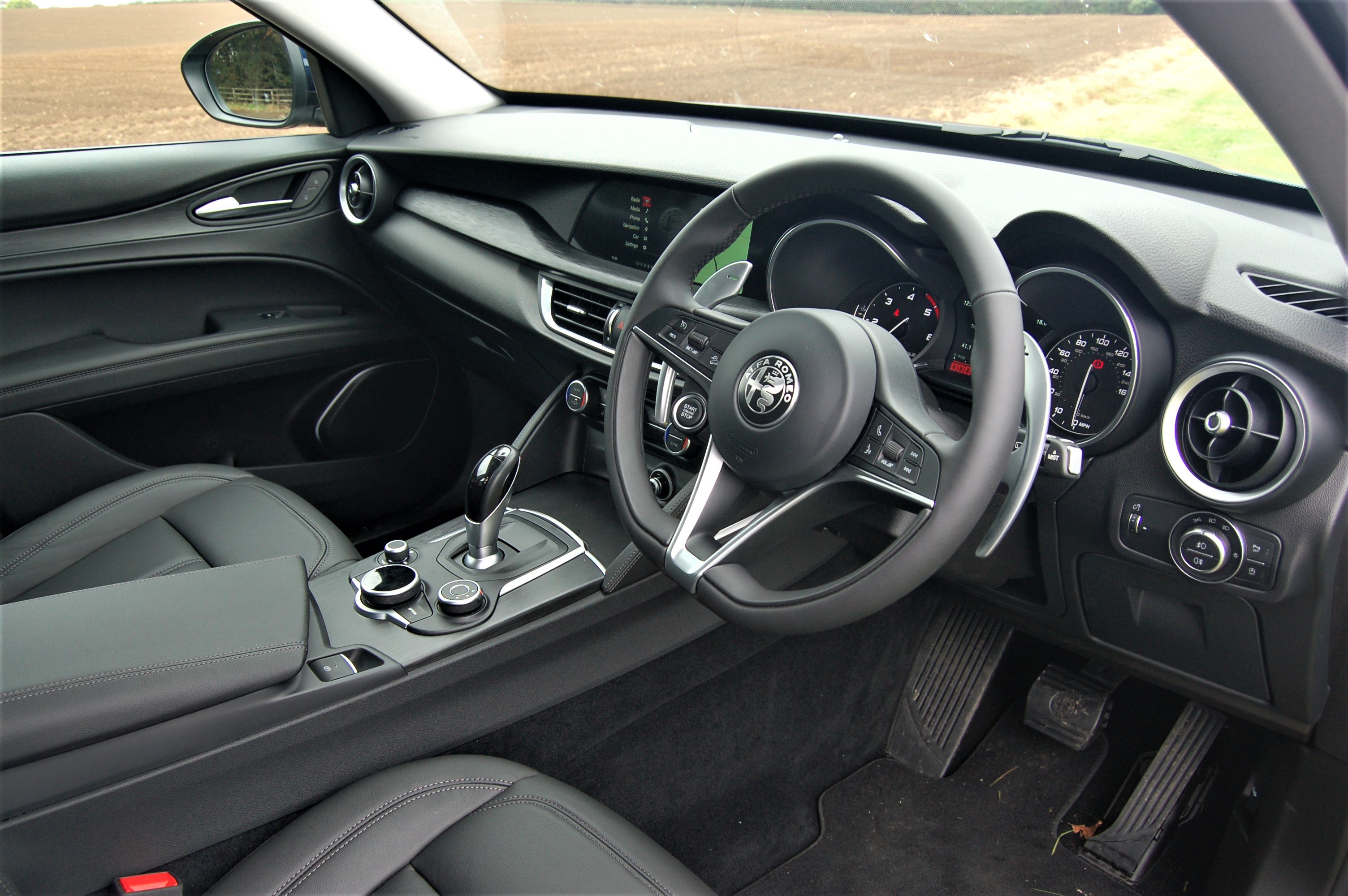
As mentioned, the ride quality of the test car was not under question on main roads, being geared towards a more sporting balance. However, the grip levels are high and, thanks to the competence of the electronic traction and stability control, even attacking a greasy roundabout resulted in little more than a tiny drift that was corrected automatically and without drama. Body roll is controlled but is marginally greater than with the Giulia model, mostly because of the increased ride height for venturing off the beaten track. While the damping is reactive on some road surfaces, the Stelvio rides surprisingly quietly, with only a distant murmur emerging from the chunky tyres. The car’s steering is lovely and feels quite high-geared, although the turning circle is restricted by lock-stops, installed because of the tyre width.
Alfa has borrowed the Fiat Group ‘DNA’ driving mode selector for the Stelvio, although it was difficult sometimes to discern the differences between Dynamic, Normal and the All-weather settings, an aspect that is probably due to the less compromising nature of the drivetrain. Apart from running the car onto a grass verge for photographic purposes, I did not take the opportunity to drive it off-road, although I have been informed that it will tackle ‘soft-roading’ tracks with aplomb, noting that its drivetrain features hill descent control, although, as with any number of other SUVs, its ultimate off-roading talents are restricted by its superior on-road balance and below car clearance.

The cabin of the Stelvio is easy to access both front and rear and the 525-litre boot is of decent proportions and nicely trimmed throughout. Its driving position is superb, the Stelvio providing a superb, multi-adjustable driver’s seat and steering column. It is a very comfortable place to reside. The dashboard architecture is a replication of the excellent packaging introduced by Giulia and, personally, I prefer the fact that its dash-centre information screen is not of the ‘touch’ variety, which always becomes finger-marked and grubby.
Of secondary interest to potential Stelvio customers is Alfa Romeo’s repute for reliability. However, the company has enough confidence to provide its models with a three years, unlimited mileage factory warranty. You have to remember that Alfa is returning to an upwards graph in its modern history, one helped immensely by its association with Chrysler-Jeep.